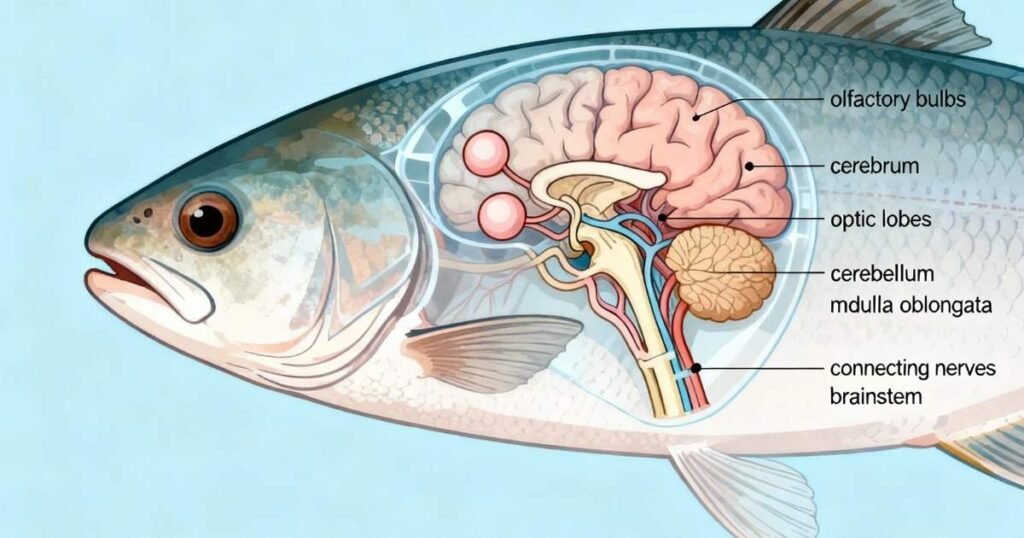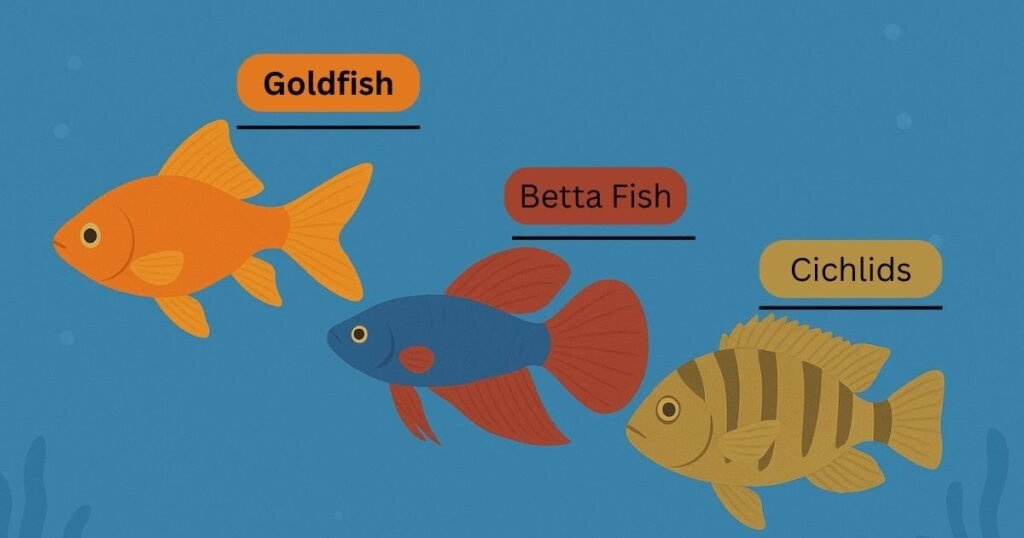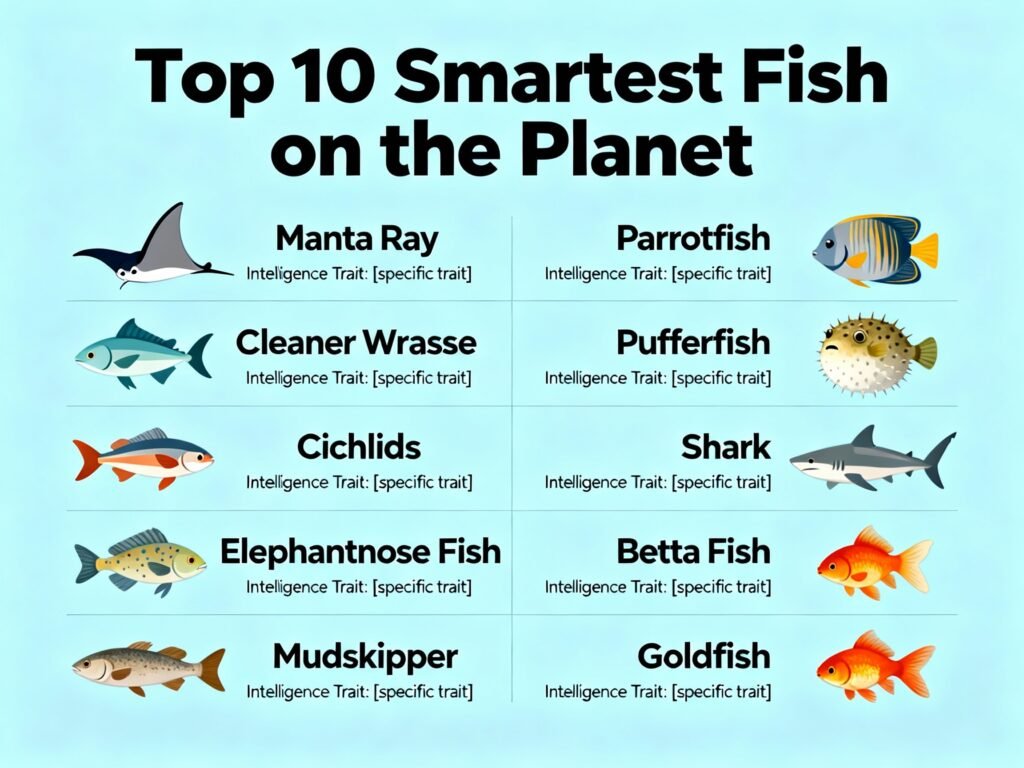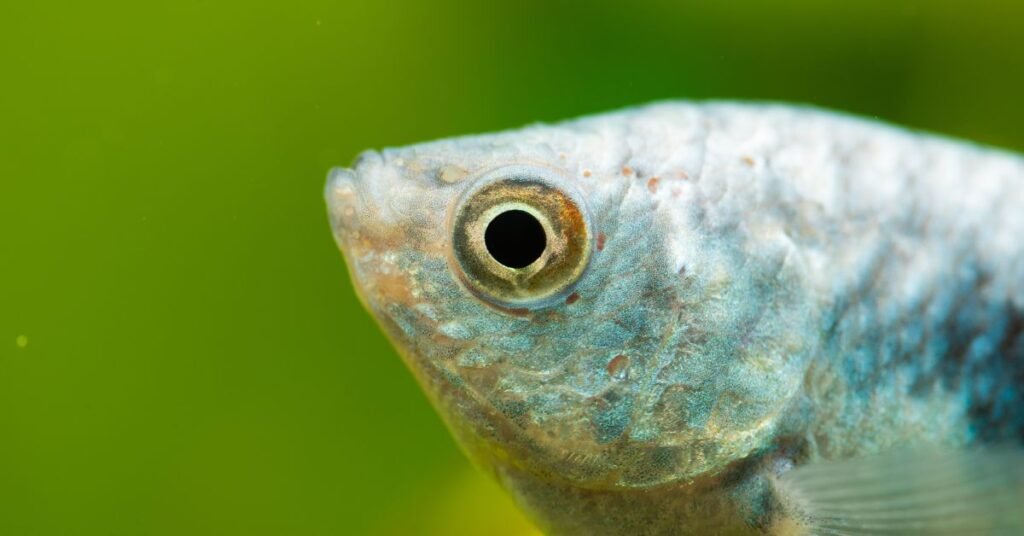Many people assume fish just swim and eat. But the truth is surprising. The smartest fish, like manta rays and Goldfish, show memory, learning, and problem-solving skills. Ignoring this can make us miss how intelligent these creatures really are. Understanding their brains helps us care for them better.
Table of Contents
What Is the Smartest Fish?
The smartest fish in the ocean is the manta ray. It is big, gentle, and very smart. Scientists say it can see itself in a mirror. That is something most animals cannot do. This makes the manta ray a top pick for the smartest sea animal.
The cleaner wrasse is another good example. This small fish can remember other fish. It knows rules and even passed the mirror test. Many people think it is the smartest pet fish you can keep.
So, do fish think? Yes, they do. They may not think like a dog or a cat, but they can learn and solve problems. Some fish are much smarter than we expect. Next time you see one swimming, remember brains live in the water, too.
What Are the Top 10 Intelligent Fish in the World?
The top 10 smartest fish include Manta Rays, Cichlids, Elephantnose Fish, Cleaner Wrasse, and Betta Fish. These fish can learn, solve problems, remember things, and interact with other fish.
- Manta Ray
- Cleaner Wrasse
- Cichlids
- Elephantnose Fish
- Mudskipper
- Parrotfish
- Pufferfish
- Shark
- Betta Fish
- Goldfish
Manta Ray
The Manta Ray (Mobula birostris, Mobula alfredi, Mobula yarae) is a big and smart fish. The giant manta ray can grow to 23 feet wide. It has triangular fins, horn-shaped fins on the head, and a wide mouth for filter feeding. Manta rays eat zooplankton and small prey in warm tropical and subtropical seas. They also visit cleaning stations where small fish eat parasites from their skin. Manta rays are social, curious, and show rare self-awareness. Because of this, many people see the manta ray as the smartest creature in the world in the ocean.
Manta rays are social. They leap out of the water, dive deep, and even play. They form friend groups and show curiosity. During mating, males form “trains” behind a female in a courtship display. They also interact with humans at times.
Manta rays remember cleaning sites, bond with other rays, and use smart behavior. Their play and curiosity show they learn and explore.
Manta rays have the largest brain-to-body ratio of any fish. Their brain is about the size of a human fist and ten times larger than a whale shark’s brain, even when body size is matched. They passed the mirror test, showing self-awareness. Fish IQ is very high, close to dolphins and primates.
Cleaner Wrasse
The Cleaner Wrasse (Labroides dimidiatus) is a small tropical reef fish known for its smart behavior and important role in the ocean. It grows to about 10–14 cm (3.9–5.5 inches) and has a wide black stripe running through its body and eye, with blue and white coloring. This species lives in coral-rich reefs across the Indo-Pacific, including East Africa, the Red Sea, and French Polynesia.
Cleaner Wrasse are best known for their cleaning service. They set up “stations” where large fish line up to have parasites, mucus, and dead tissue removed. This service keeps reefs healthy. They are also protogynous hermaphrodites, which means they can change from female to male.
They show advanced fish intelligence through social behavior. They recognize other fish, remember clients, and even “negotiate” cleaning to avoid cheating. They also use gentle touches to calm bigger fish. Cleaner Wrasse passed the mirror test, showing rare self-awareness.
Their fish IQ is high. They use memory, learning, and problem-solving daily. Their brain fish is small for their body length (~10–14 cm) but highly complex. This makes them one of the smartest small reef fish in the world.
Cichlids
The Cichlids (Family: Cichlidae, 1,760+ species), including the popular Rainbow Oscar Fish, are very diverse freshwater fish. They live in tropical areas like Africa, the Neotropics, and parts of Asia. They come in many colors and sizes, from 5 cm to 91 cm. They live in many different habitats.
Cichlids are known for strong parental care. They guard eggs and fry or carry them in their mouths. Their variety in the African Great Lakes shows fast evolutionary changes. Some, like the African giant cichlid, are important for fisheries and aquariums. They show social and breeding behaviors that most fish do not.
Cichlids, including the Rainbow Oscar Fish, have strong memory and social skills. They recognize other fish, defend their territory, and adapt during mating and parenting. Female-only caregivers often have higher cognitive skills, which affects brain size. They learn from their surroundings and show smart social behavior.
Cichlids are some of the smartest fish. They have high Fish IQ, with brain size linked to parenting and their environment. Their brains help them learn, solve problems, and act socially.
Elephantnose Fish
The Elephantnose Fish (Gnathonemus petersii) is a freshwater fish from West Africa. It lives in slow rivers and streams. This fish has a long, trunk-like extension on its head. It uses this to generate and sense weak electric fields. This helps it navigate and find prey like insect larvae in dark or murky water.
The Elephantnose Fish can “see” electrically and visually. It switches between these senses depending on the environment. It hunts at dawn and dusk using electric pulses from an organ near its tail. Despite a small brain, it performs tasks like mammals, recognizing objects across senses.
This fish has excellent memory and sensory skills. It combines electrical and visual input efficiently. It uses the most reliable sense for the situation, like electricity for nearby objects and vision for distant ones. It can recognize objects with one sense after learning them with another, showing cross-modal learning and memory.
The Elephantnose Fish ranks among the smartest fish. Its Fish IQ is very high, and its brain size is large relative to body weight. The brain works efficiently, using three times more oxygen per body mass than humans. It handles complex cognitive tasks without a cerebral cortex.
The Elephantnose Fish shows remarkable intelligence, memory, and sensory abilities, rivaling mammals despite its small size.
Mudskipper
The Mudskipper (Family: Oxudercinae, species like Periophthalmus spp.) is an amphibious fish. It lives in water and on land. You can find it in mudflats and estuaries across the Indo-Pacific and Atlantic coasts of Africa. Mudskippers grow up to 30 cm (12 inches). They use strong pectoral fins like legs. They skip, crawl, and climb easily.
Mudskippers have protruding eyes that move independently. This helps them see above and below water. They breathe through their skin and the lining of their mouth on land. Males show bright colors and do push-ups and jumps to attract females. They build smooth burrows to protect eggs and supply oxygen.
Mudskippers remember burrow locations. They move confidently on land and in water. They use both senses to explore their environment. They defend territory and show courtship behaviors. They learn to recognize food and respond to it.
Mudskippers have a moderate to high Fish IQ. Their brain size fits their land and water lifestyle. Their brain helps them move, sense, solve problems, and interact socially.
The Mudskipper is a smart and active amphibious fish. It thrives on land and in water.
Parrotfish
The Parrotfish (Family: Scaridae, around 80+ species such as Scarus and Chlorurus) is a bright tropical fish. It lives in coral reefs across the Atlantic, Indian, and Pacific oceans. Parrotfish have strong beak-like jaws made of fused teeth. They use these jaws to scrape algae and coral. They help keep reefs healthy and produce sand by digesting coral. Some species make thousands of pounds of sand every year.
Parrotfish have a specialized pharyngeal jaw to grind coral. Many species change sex from female to male. Their colors change when they switch sexes. At night, some species secrete mucus cocoons to protect themselves from predators and parasites.
Parrotfish have good spatial memory. They can find feeding grounds and return to safe sleeping spots. They show social behaviors like schooling and defending territory. They perform complex mating rituals and follow dominance hierarchies.
Parrotfish have a moderate Fish IQ. Their brain size is functional and efficient. It supports problem-solving, social behavior, motor coordination, and sensory processing. Their brain helps them scrape coral, navigate reefs, and interact with other fish.
The Parrotfish is smart and adaptive. It plays a key role in reef health while showing advanced behaviors for survival.
Pufferfish
The Pufferfish (Family: Tetraodontidae, about 120 species such as black-spotted puffer, giant puffer, and map puffer) is a unique tropical fish. It inflates by swallowing water or air to look bigger and scare predators. Pufferfish have beak-like teeth to crush hard prey. Some species build circular sand nests to attract mates. They can change color for camouflage and communication. Many produce tetrodotoxin, one of the most powerful marine poisons.
Pufferfish inflate three to four times their size. They have fused teeth. Some close their eyes at times. They build elaborate nests for mating.
Pufferfish remember food locations and territories. They perform courtship dances and defend their nests. They change colors to signal or hide. Their inflation behavior works with their senses.
Pufferfish show moderate Pufferfish intelligence. Their brain size is moderate but specialized for defense, sensory processing, motor control, and social behaviors.
The Pufferfish uses both its body and brain to survive and reproduce successfully.
Shark
The Shark (Class: Chondrichthyes, Subclass: Elasmobranchii, 540+ species) is a group of cartilaginous fish. Species include tiger sharks, bull sharks, great white sharks, mako sharks, whale sharks, and hammerhead sharks. Sharks range from under 20 cm to the giant whale shark, which feeds on plankton.
Sharks have lived for over 400 million years. They replace their teeth continuously, sometimes thousands of times. Apex predators like the great white have sharp senses. Hammerheads have unique head shapes to sense prey better. Whale sharks can grow up to 18 meters and filter-feed.
Sharks remember locations and hunt strategically. They sense prey with smell, vision, lateral line, and electroreception. Sharks show social behavior, defend territory, and migrate. They can learn and solve problems.
Sharks have a moderate to large brain size for fish. Their sensory and motor areas are strong. The IQ of a shark is high compared to that of many fish. They use memory, learning, and spatial awareness to survive.
Sharks combine power, senses, and intelligence to dominate the ocean.
Betta Fish
The Betta Fish (species: Betta splendens) is a small freshwater fish from Southeast Asia. It belongs to the family Osphronemidae and order Anabantiformes. Bettas are famous for bright colors, flowing fins, and territorial behavior.
Betta fish have a labyrinth organ to breathe air. They survive in low-oxygen water like rice paddies. Males build bubble nests and guard eggs. Selective breeding created many color and fin varieties. Males fight to defend territory.
Betta fish recognize humans and remember feeding times. They learn visual cues and can navigate mazes. They build nests and protect offspring. Bettas show deliberate and intelligent behavior.
Betta fish have moderate Fish IQ. Their brain size is small but efficient, supporting learning, memory, and territorial behavior. They combine instinct with learned skills.
Betta fish show how small fish can be smart. They use memory, learning, and strategy to survive and thrive in their environment.
Goldfish
The Goldfish (species: Carassius auratus) is a freshwater fish in the family Cyprinidae. It is native to East Asia and has been domesticated for over a thousand years. Goldfish are popular in aquariums and ponds.
Goldfish come in many breeds with different colors, shapes, and fins. They recognize human faces. They remember feeding times and locations. Their brains have regions like the human hippocampus, supporting memory and spatial learning. Goldfish can solve mazes and remember tasks for at least six months.
Goldfish use cues to navigate and make “cognitive maps.” They retain long-term memory of food locations. They learn from other fish and adapt to changes. Studies on Fish social goldfish brains show they understand social hierarchies and interact well with tank mates.
Goldfish have moderate Fish IQ. Their brain size is small but complex, with hippocampus-like structures. It supports learning, memory, and spatial awareness.
Goldfish prove small freshwater fish can have advanced memory, learning, and adaptive behaviors.
How long is Fish Memory
Many people think fish have simple brains, but that is not true. A fish brain diagram shows their brains are built for memory, learning, and survival. The forebrain helps with smell and social behavior. The midbrain controls sight and movement. The hindbrain manages balance and swimming. Goldfish, cichlids, and bettas use these parts to remember food, owners, and places. Salmon use brain power to migrate back to their rivers after years at sea.

The Elephantnose fish has a large brain compared to its body, almost like some mammals. Each section in a fish brain diagram shows how fish use memory to find food, avoid predators, and live in groups. Fish do not just act on instinct. They think, learn, and remember. The Manta Ray, known as one of the smartest fish, also shows how brain size and power connect to intelligence in the ocean.
Most Intelligent Fish Species for Aquariums
Fish can be more than just decoration. A fish’s common name isn’t always specific; it might identify a single species, an entire family or genus, or multiple different, unrelated species, some species show real intelligence. They remember, learn, and interact with people. If you want a smart pet, pick the right fish for your tank.
Goldfish are famous for their memory. They know feeding times, recognize faces, and even learn tricks.
Betta fish show strong recall, too. They respond to objects and adjust to routines. Cichlids stand out for problem-solving. They protect the young and learn from other fish. Oscar fish also show bold behavior. They follow owners and react to hand signals.

The Elephantnose fish is unique. It has a large brain for its size and uses electric signals to explore and learn. This makes it one of the most fascinating aquarium pets.
If you care for these fish, keep their aquarium water clean and oxygen-rich. Knowing how to oxygenate a fish tank is key for health and activity.
While we call them smart, they are not alone. People often ask, What is the smartest aquatic animal? Dolphins usually take that spot. Still, many aquarium fish prove they can think, remember, and even bond with their owners.
How smart are fish compared to humans?
Fish do not understand humans like dogs or cats. But they can recognize people and react. Goldfish, bettas, and cichlids remember feeding times. They even learn to recognize their owner’s face. They know humans bring food or safety. Some fish follow hand signals or swim toward a person when it is time to eat.
When we ask, Can fish understand humans, the answer is yes, in a simple way. They do not understand words or complex commands. But they link humans to routines, food, and care. This shows strong memory and learning.
Some of the smartest fish, like the Elephantnose fish and manta ray, solve problems and show social behavior. Fish may not think like humans, but they can recognize people, form habits, and trust those who feed and care for them.
Final Thought
The smartest fish are not just pets; they are thinkers, learners, and social creatures. Goldfish recognize faces, bettas remember feeding routines, and manta rays show self-awareness. By keeping their tanks clean, oxygenated, and stimulated, you let these fish show their full intelligence. Choosing smart fish and providing the right care gives you more than decoration; you get companions that explore, learn, and interact every day. Appreciating the smartest fish changes how we see and care for aquatic life.



